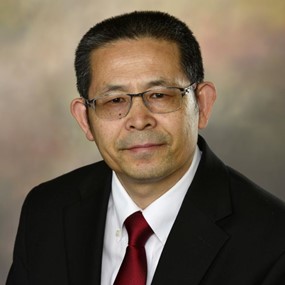Office Hours
By Appointment
Education
PhD, University of Washington
MA, Southern Illinois University
MA, Northeast Normal University
About Me
Morris L. Bian joined Auburn University's history faculty in 1998. He received his PhD from the University of Washington. His research focuses on enduring questions of the Chinese Revolution of 1949.
Although the Chinese Revolution occurred more than six decades ago, our understanding of it remains far from adequate. For decades, scholars had portrayed the Chinese Revolution as a radical break from the past. Beginning in the 1990s, some scholars challenged the thesis of the Chinese Revolution as a radical break. Joining the growing ranks of scholars further bridging the 1949 divide and focusing on the evolution of economic institutions, Bian revealed in The Making of the State Enterprise System in Modern China: The Dynamics of Institutional Change (Harvard University Press, 2005) that the basic institutional arrangement of China’s state-owned enterprises took shape in China during WWII and was not derived from the Soviet model. He concluded that the critical issue was no longer that of establishing institutional and ideological continuity between the Nationalist and Communist eras; instead, it rested in understanding why and how the Chinese Communists kept intact, built on, and expanded existing institutions, including existing Communist institutions.
Bian’s current project creates a synthesis of the two opposing views surrounding the Chinese Revolution. It redefines the Chinese Revolution in economic institutions by exploring the evolution of Guizhou regional economic institutions through both war and revolution (1937-1957). In a major article (“Redefining the Chinese Revolution: The Transformation and Evolution of Guizhou’s Regional State Enterprises, 1937–1957,” Modern China, May 2015) derived from this project, Bian analyzed key elements of Guizhou regional economic institution, which included not only Guizhou regional economic bureaucracy and regional state enterprises but also enterprise organization, management, and incentive structures and mechanisms. Specifically, he examined how these elements emerged, grew, broke down and were replaced, focusing on the creation and expansion of Guizhou regional state enterprises, the transformation of enterprise authority structure, the transplantation of the Soviet economic accounting system, the appropriation of a Western accounting system, and the development of social service and welfare institutions. Bian demonstrated that the changes in Guizhou regional state enterprises during these decades were both radical and transformative and gradual and evolutionary. He concluded that the Chinese Revolution in Guizhou regional economic institutions were far less revolutionary than what we have been led to believe. In the process, Guizhou regional state enterprises came to be defined by bureaucratic enterprise governance, CCP control over enterprise employees, and distinctive enterprise management and incentive mechanisms. Most recently, Bian extended his analysis to the remaining decades of the twentieth-century and beyond, presenting a reinterpretation of China’s public economy over a period of eight decades (“Explaining the Dynamics of Change: Transformation and Evolution of China’s Public Economy through War, Revolution, and Peace, 1928-2008,” State Capitalism, Institutional Adaptation and the Chinese Miracle, eds. Barry Naughton and Kellee S. Tsai, Cambridge University Press, 2015).
Bian is the past president of the Historical Society for Twentieth-Century China and a member of the Editorial Board of The Chinese Historical Review.
Research Interests
20th-century Chinese political, economic, and institutional history
Publications
Books
- The Making of the State Enterprise System in Modern China: The Dynamics of Institutional Change (Harvard University Press, 2005)
Articles
- “State Enterprises during the First Half of the Twentieth Century,” The Cambridge Economic History of China, Volume 2: 1800 – Present, eds. Debin Ma and Richard von Glahn (Cambridge University Press, 2022): 184-207. DOI: https://doi.org/10.1017/9781108348485.007.
- “西方学界最近40年对中国企业史研究的述评” [A Critical Examination of Western Studies of Chinese Business and Economic History, 1978-2018]《经济社会史评论》[Social & Economic History Review] 16: 4 (November 2018): 104-124.
- “Explaining the Dynamics of Change: Transformation and Evolution of China’s Public Economy through War, Revolution, and Peace, 1928-2008,” State Capitalism, Institutional Adaptation and the Chinese Miracle, eds. Barry Naughton and Kellee S. Tsai (Cambridge University Press, June 2015).
- “Redefining the Chinese Revolution: The Transformation and Evolution of Guizhou’s Regional State Enterprises, 1937–1957,” Modern China 41:3 (May 2015): 313-350. Published online before print April 21, 2014 at http://mcx.sagepub.com/content/early/2014/04/21/0097700414530830.abstract. doi: 10.1177/0097700414530830.
- “ 单位是怎样炼成的:重新解释中国单位制度之起源” [How Danwei Was Created: A Reinterpretation of the Origins of China’s Danwei System]. In 《中国与世界历史中的重庆》[Chongqing in Chinese and World History], ed. Wang Xi (Chongqing daxue chubanshe, 2013): 214-236.
- “Interpreting Enterprise, State, and Society: A Critical Review of the Literature in Modern Chinese Business History, 1978–2008,” Frontiers of History in China 6:3 (September 2011): 423–462.
- “The Formation of the Nationalist Ideology of the Developmental State during the Sino-Japanese War, 1937-1945.” In 《大同道路:孙中山研究》[Toward a Common Path: Studies of Sun Yatsen], eds., Wang Pengshan and Zhang Xianwen (Nanjing chubanshe, 2010): 290-324.
- "How Crisis Shapes Change: New Perspectives on China's Political Economy during the Sino-Japanese War, 1937-1945," History Compass 5 (July 2007): 1091-1110.
- "Building State Structure: Guomindang Institutional Rationalization during the Sino-Japanese War, 1937-1945," Modern China 31 (January 2005): 35-71.
- "The Sino-Japanese War and the Formation of the State Enterprise System in China: A Case Study of the Dadukou Iron and Steel Works, 1938-1945," Enterprise & Society 3 (March 2002): 80-123.
Translations
- 制度变迁的逻辑:现代中国国营企业制度之形成 [The Making of the State Enterprise System in Modern China: The Dynamics of Institutional Change], Hangzhou, China: Zhejiang daxue chubanshe, 2011. 307p. This is the Chinese edition of Bian’s book The Making of the State Enterprise System in Modern China: The Dynamics of Institutional Change (Harvard University Press, 2005).
- “From Aborigines to Landed Proprietors: Taiwan Aboriginal Landed Rights, 1690-1850.” Translated into English from a scholarly article written in Chinese. In Remapping China: Fissures in Historical Terrain edited by Gail Hershatter, Emily Honig, Jonathan N. Lipman, and Randall Stross (Stanford University Press, 1996), 130-42.
Courses Taught
- World History I
- Survey of East Asian History
- The Historian’s Craft
- History of Modern China
- Graduate Seminar on Critical Issues of the Political Economy of Eurasian Development
